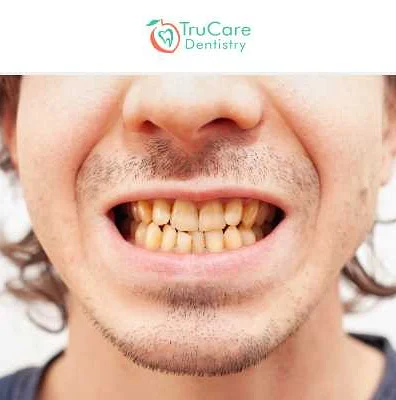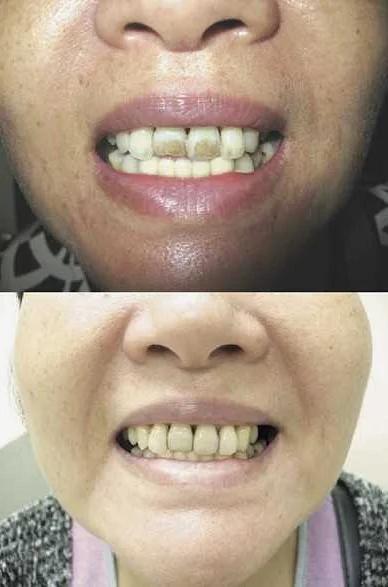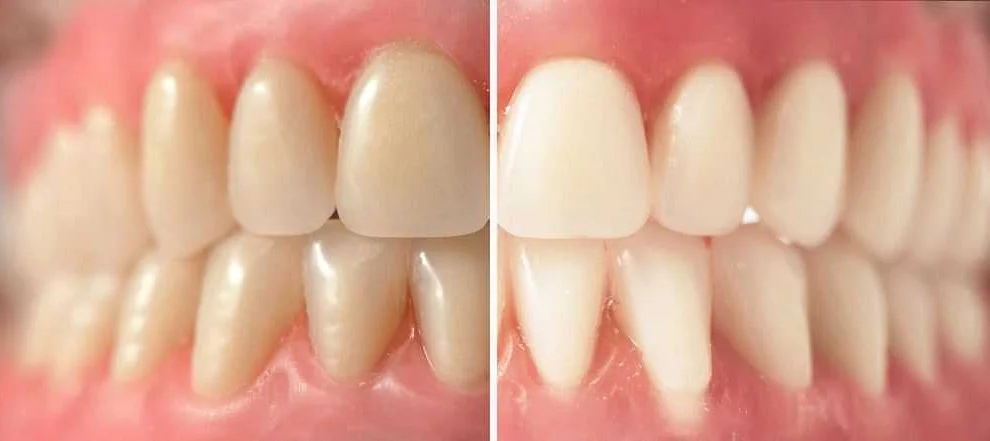Dentist Ganiev Explained What a Tetracycline Tooth Is and How to Treat It
Discover what a tetracycline tooth is and learn about the treatment options. Dental expert, Dr. Ganiev, provides insights and recommendations for addressing tetracycline stained teeth.
Tetracycline tooth is a common term used to describe teeth that have been discolored or stained due to the use of tetracycline antibiotics during tooth development. Tetracycline is an antibiotic medication that is commonly prescribed to treat bacterial infections, such as acne, respiratory infections, and urinary tract infections. However, when taken by pregnant women or children under the age of 8, tetracycline can affect the development of tooth enamel, resulting in permanent discoloration.
Dr. Ganiev, a renowned dentist, explains that the discoloration caused by tetracycline can range from mild yellowing to dark gray or brown stains. The severity of the staining depends on various factors, including the dosage and duration of tetracycline use, as well as the stage of tooth development at the time of exposure. Tetracycline stains are typically present on the teeth from the time they erupt and can be a source of embarrassment and self-consciousness for many individuals.
So, how can tetracycline tooth be treated?
According to Dr. Ganiev, there are several treatment options available to improve the appearance of tetracycline stains. One of the most effective approaches is professional teeth whitening procedures, such as laser teeth whitening or in-office bleaching. These treatments involve the use of powerful whitening agents to break down the stains and lighten the tooth color. However, it is important to note that the results may vary based on the severity of the stains and the individual’s response to the treatment.
Dentist Ganiev explains: What is a tetracycline tooth and how to treat it?

Tetracycline tooth refers to a tooth that has been stained or discolored due to the use of tetracycline antibiotics during tooth development. Tetracycline is an antibiotic commonly used to treat various bacterial infections, but when taken by pregnant women or children under the age of 8, it can cause permanent discoloration of teeth.
The discoloration caused by tetracycline can vary in severity from mild yellowing to dark brown or gray stains. The staining usually affects the entire tooth, making it unattractive and impacting a person’s self-confidence.
Treating tetracycline tooth discoloration can be challenging, but there are several treatment options available. One common approach is bleaching or teeth whitening, which involves using a peroxide-based solution to remove the stains. However, this method may not be effective for severe cases of tetracycline staining.
In more severe cases, dental veneers or crowns may be recommended. Veneers are thin shells made of porcelain or composite resin that are bonded to the front surface of the teeth, providing a natural and attractive appearance. Crowns, on the other hand, are tooth-shaped caps that cover the entire tooth, offering a more comprehensive solution for severely stained teeth.
It’s important to note that the treatment for tetracycline tooth discoloration may vary depending on the individual case. Therefore, it is best to consult with a qualified dentist who can evaluate the severity of the stains and recommend the most suitable treatment option.
Overall, while tetracycline tooth discoloration can be a cosmetic concern, it is not a health risk. With the help of modern dental techniques and treatments, affected individuals can regain their confident smiles and improve their overall dental aesthetics.
Understanding tetracycline tooth stains

Tetracycline tooth stains are a type of dental discoloration that can occur due to the use of tetracycline antibiotics during tooth development. Tetracycline is an antibiotic commonly prescribed to treat various bacterial infections, but it can also have an effect on teeth if taken during pregnancy or in childhood.
When tetracycline is ingested, it becomes incorporated into the developing teeth, causing them to develop a gray or brown discoloration. The severity of the stains can vary, ranging from mild to severe, and can affect both primary (baby) teeth and permanent teeth.
Tetracycline tooth stains are considered intrinsic stains, meaning that they occur within the structure of the tooth and cannot be easily removed by conventional teeth whitening methods. The discoloration is often deep and can penetrate multiple layers of the tooth, making it difficult to treat.
In some cases, tetracycline tooth stains can be visually noticeable and may lead to self-consciousness or loss of confidence. However, it’s important to note that these stains do not typically cause any physical harm or affect the health or function of the teeth.
Treating tetracycline tooth stains can be challenging, but there are several options available. One common approach is the use of dental veneers or dental bonding, which involve placing a thin layer of porcelain or composite resin on the front surface of the affected teeth to improve their appearance. Another option is dental crowns, which are custom-made caps that cover the entire tooth to mask the discoloration.
In some cases, teeth whitening procedures may also be attempted, although their effectiveness can vary depending on the severity of the stains. It’s important to consult with a dentist to determine the most appropriate treatment option based on individual needs and circumstances.
Overall, understanding tetracycline tooth stains is important for individuals who have experienced this type of dental discoloration. By knowing the causes, characteristics, and treatment options, individuals can make informed decisions about their dental health and seek appropriate care from a dental professional.
Causes of tetracycline tooth stains
Tetracycline tooth stains are discolored areas on the teeth caused by the use of tetracycline antibiotics during tooth development. These stains can range from light yellow to dark brown and can affect both the baby teeth and permanent teeth.
The main cause of tetracycline tooth stains is the exposure to tetracycline antibiotics during tooth development, which typically occurs during childhood. Tetracycline antibiotics are commonly used to treat various bacterial infections, such as acne and respiratory tract infections.
When tetracycline antibiotics are taken by children whose teeth are still developing, the medication can become incorporated into the structure of the teeth, causing them to become discolored. This happens because tetracycline binds to calcium ions, which are essential for the normal development and mineralization of teeth.
The severity of tetracycline tooth stains can vary depending on factors such as the dosage and duration of tetracycline use, as well as the stage of tooth development at the time of exposure. Teeth that are still forming are more susceptible to tetracycline staining compared to fully developed teeth.
It’s important to note that tetracycline tooth stains cannot be removed or lightened by traditional teeth whitening methods. This is because the discoloration is deep within the tooth structure and cannot be easily accessed.
If you or your child have tetracycline tooth stains, it is recommended to consult with a dentist who can recommend appropriate treatment options, such as dental veneers or crowns, to improve the appearance of the affected teeth.
Effects of tetracycline tooth stains on oral health

Tetracycline tooth stains can have a significant impact on oral health. These stains occur when the antibiotic tetracycline is taken during tooth development, usually in childhood. The medication can become incorporated into the structure of the tooth, causing it to appear discolored and stained.
One of the main effects of tetracycline tooth stains is a negative impact on the individual’s self-esteem and confidence. Discolored teeth can make a person feel self-conscious, leading to social anxiety and a reluctance to smile or engage in social situations. This can have a profound psychological impact and affect various aspects of a person’s life.
In addition to the esthetic concerns, tetracycline tooth stains can also have functional effects on oral health. The stains can lead to tooth sensitivity, making it uncomfortable to consume hot or cold foods and drinks. The discoloration may also be associated with weakened tooth enamel, increasing the risk of tooth decay and cavities.
Furthermore, tetracycline tooth stains can affect the overall appearance of the smile, leading to an imbalance in tooth color and uniformity. This can make it difficult to achieve an attractive smile, impacting the individual’s confidence and self-image.
Fortunately, there are treatment options available to address tetracycline tooth stains. These may include professional teeth whitening procedures, dental bonding, veneers, or crowns. It is important to consult with a dentist to determine the most appropriate treatment plan based on the severity of the stains and individual needs.
Overall, the effects of tetracycline tooth stains on oral health extend beyond the esthetic concerns. These stains can significantly impact an individual’s self-esteem and confidence, as well as increase the risk of tooth sensitivity and decay. Seeking professional dental care is crucial in addressing these effects and restoring a healthy, beautiful smile.
Treatment options for tetracycline tooth stains

Tetracycline tooth stains can be a significant cosmetic concern for many individuals. These stains result from the use of tetracycline antibiotics during tooth development, leading to the discoloration of the teeth.
Fortunately, there are treatment options available to address tetracycline tooth stains and restore the natural appearance of the teeth. The most common treatment options include:
1. Teeth whitening: Professional teeth whitening procedures, such as in-office bleaching or take-home whitening kits, can help lighten the appearance of tetracycline stains. However, it is important to note that the degree of whitening achieved may vary depending on the severity of the stains.
2. Dental veneers: Dental veneers are thin, custom-made shells that are bonded to the front surface of the teeth. They can effectively cover tetracycline stains and provide a more aesthetically pleasing smile. Veneers can be made from porcelain or composite resin materials.
3. Dental bonding: Dental bonding involves applying a tooth-colored resin material to the affected teeth and shaping it to match the natural teeth. This option can be less expensive than veneers, but the results may not be as long-lasting or as natural-looking.
4. Dental crowns: In severe cases of tetracycline tooth stains, dental crowns may be recommended. Crowns are tooth-shaped caps that cover the entire tooth, providing a complete restoration of the tooth’s appearance and function.
5. Tooth-colored fillings: For mild tetracycline stains, tooth-colored fillings can be used to replace old metal fillings or fill in areas of tooth decay. These fillings can help improve the overall appearance of the teeth.
It is important to note that the effectiveness of these treatment options may vary depending on the individual case. It is recommended to consult with a dental professional to determine the most appropriate treatment plan for tetracycline tooth stains.